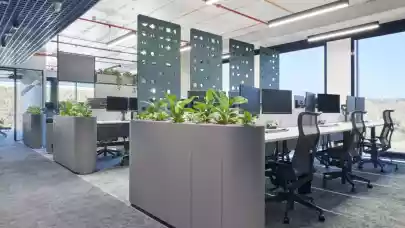
Leoš Anderle, CEO of Sekyra Group spoke to Property Forum about the residential projects of the Group not only in Prague but also in other cities, including abroad. He also shared what kind of buildings are the most complicated to build.
The housing market in the Czech Republic is still frozen. Many people can no longer afford a new apartment. So, who is buying new flats in the Czech Republic today? What kind of people are they?
I wouldn't say the residential market is frozen: it bottomed out in the last quarter of last year. Since then, we have seen signs of recovery, with the market growing on the order of 20% every quarter. The middle housing segment was hardest hit by the crisis, where people use mortgages extensively. Although these have become much more expensive, we believe that the easing of conditions for obtaining them will contribute to the recovery. As far as the upper housing segment is concerned, this has not been fundamentally affected by the crisis.
In 25 years of your existence as a developer, you have built numerous office buildings in the Czech real estate market, including headquarters for the most important players on the market. Which ones were the most complicated and why?
Paradoxically, office buildings are easier to construct than residential buildings. If I were to single out one building, it would be the forthcoming new headquarters for Česká spořitelna, work on which should begin next year. It will be a very sophisticated complex in terms of technology. It will also be the largest office building in the Czech Republic. Among commercial buildings, I would also mention the National Technical Library; the construction of this public structure was technically very demanding. We won several prestigious awards for it, including the Architecture Grand Prix, Building of the Year and Czech Grand Design.

Leoš Anderle
CEO
Sekyra Group
You are currently involved in the completion of Prague's Vítězné náměstí square. What is happening in this project now and when are we going to see the final version of what the square will eventually look like?
We are working with two other partners on this project, Penta and Kaprain; the project is also supported by the Prague 6 municipality. It will include, among other things, a cultural centre for local needs and a new rector's office for the University of Chemistry and Technology. An international, two-round architectural competition was held for the project design: the winner will be announced in September. We will then start working on the project documentation.
You have several large projects in various stages around Prague as well. When will the first residents move into the houses in projects like Smíchov City, Rohan City, or the area of the former Žižkov goods station (Nákladové Nádraží Žižkov), and how many residents you are expected to live in these projects?
The first owners will take possession of their flats in the Smíchov City and Rohan City projects in the autumn of this year. Another residential building will be completed in Smíchov in the middle of next year. To be able to build in Žižkov, a change in the zoning plan must first be approved; this has not happened yet. All these projects - Smíchov City, Rohan City and Žižkov City - are multifunctional districts with a complete range of amenities. It is therefore more useful to calculate how many people will live and work in them: in the case of Smíchov City, around 12,000 people, in Rohan City around 11,000 people and in Žižkov City around 8,500 people.
In the past, you have stated that the total cost of Smíchov City will exceed CZK 20 billion (€831 million). This amount of investment and the scale of the project for 12,000 people make it the largest development project in Prague's modern history. How has the past crisis affected this huge investment and the project? Have you ever wanted to put such a large-scale project on hold because of any of the crises like other developers?
Due to lengthy permitting processes, developers cannot prepare apartments for a specific moment. The whole process is unpredictable. We have been fortunate that in terms of our schedules, we have not been significantly affected by the crisis. All the apartments in the phases under construction found owners during 2021 and 2022. We will put the apartments from the other phases on sale at the end of this year.
All these large development projects in Prague will bring hundreds to thousands of flats to the market. Is there still room for a similarly large type of project in Prague or will you go beyond the city limits with your next project?
We are currently preparing a residential project in Ostrava in cooperation with our local partner, Ridera. We are not opposed to rental housing projects in the region, and we are currently evaluating opportunities. In the future, however, most of our production will still be in Prague. Development of our major city-building projects will take many years - in the case of Žižkov, at least until 2040.
What are your plans abroad in the future?
We have purchased a rental housing project in Bratislava and will start its construction next year. We are also looking at opportunities in Berlin.
You are a company that follows the concept of sustainability and environmental impact in your projects. How do you apply these principles in practice as a large developer?
In general, office buildings in the Czech Republic are absolutely comparable to those in Western capitals. They have sustainability certificates and use advanced technologies. These are also beginning to make their way into residential projects, thanks to forthcoming legislation. These are technologies aimed at greater energy savings and reducing the carbon footprint of operations. The drive to reduce the carbon footprint bound up with construction is another emerging trend.



